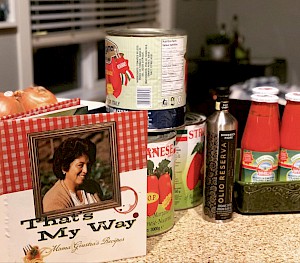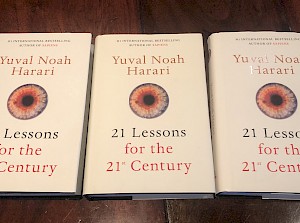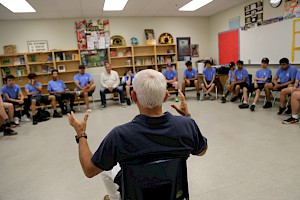America’s Oldest Continuously Operating Victory Garden
October 12, 2021Originally published on ModernFarmer.org
“Don’t it always seem to go
That you don’t know what you got ’til it’s gone
They paved paradise and put up a parking lot.”—Joni Mitchell
Throughout my life, I have found that maintaining a positive outlook has helped me achieve many good things. At the risk of sounding like a self-help book author, I will only say that, when I have put ideas out there that I truly believe in and that are for the benefit of others, they generally come together. Such was the case recently, when on a trip to Boston I took time to visit Fenway Victory Gardens.
As many readers know, I am the co-founder of the Million Gardens Movement (MGM), which I launched last year as a partnership between Modern Farmer and Kimbal Musk’s Big Green nonprofit organization. The goal of our movement is to see one million new gardens planted in North America over the next 12 months. Why? During the COVID-19 lockdown that began in March 2020, we witnessed a spike in interest in our home gardening stories. As we dug further, we found several reasons for that newfound interest. Some people were just looking for a means of maintaining their sanity at a time when leaving their homes was not possible. Research has shown that gardening helps reduce stress and anxiety, and it can boost your mood as much as some types of exercise.
But the COVID-19 pandemic also revealed a startling level of food inequality in our society. As the pandemic set in, one in four Americans skipped a meal or had to rely on some form of government food assistance. It also reminded us that 24 million Americans live in food deserts where they lack access to fresh fruits and vegetables. The Million Gardens Movement is primarily designed to address this issue—to reconnect people to their food source.
We borrowed the idea for MGM from the victory gardens that were popular during World War II in the US, Canada, the UK and other countries. Introduced and promoted by President Franklin Roosevelt in 1942, victory gardens were designed to supplement food budgets so that the government could support soldiers overseas. The support required food rations at home of items such as meat, eggs and canned goods. People were encouraged to grow their own vegetables in their backyards, parks and playgrounds. At its height, there were an estimated 20 million victory gardens across the country, supplying 40 percent of the fruits and vegetables consumed in the US.
In the US, the only remaining continuously operating victory garden from that time is Fenway Victory Gardens in Boston. Next year, it will celebrate its 80th year of uninterrupted operation. This 7.5-acre plot hosts 500 individual gardens that are cared for by 420 local gardeners.
Initially, I decided to pay a visit to Fenway Victory Gardens to take a few photos and read the information boards in order to inform myself. I asked the taxi to wait for me, thinking I would spend five or so minutes browsing. The experience was somewhat different and inspirational.
As I was wandering down the path, I noticed a group of people working away in one of the plots. I stopped to say “hello” and a woman in a big hat and dirt-laden clothes looked up, smiled and approached me. She shook my hand and, as I explained what I was doing, introduced herself as Pam Jorgensen, president of the Fenway Garden Society Inc., the nonprofit that oversees the running of the Fenway Victory Gardens. It was a chance meeting, and I was delighted to run into the perfect person to enlighten me on the gardens’ history. I scrambled for my phone, turned on my voice memo and asked to interview her. She was suspicious at first, but as I explained my mission, she led me to a park bench and our conversation began.
Jorgensen walked me through the history of the gardens, describing how they managed the entire plot during World War II using a horse-drawn plough. She told me it’s the most diverse organization for which she has ever worked. There are a total of 14 languages represented by the citizens that tend to the individual gardens, with a range of ages. The oldest gardener is 102 years old and has been gardening his plot for more than 50 years. Some garden to grow vegetables, others for their mental well-being. She puts herself in the latter category.
During the 1970s, there was a movement to destroy the site and build a parking lot, but a local hero by the name of Richard D. Parker fought against it and eventually prevailed. There is a memorial in his name located in the gardens.
I left her feeling inspired, and I was relieved that my taxi driver did not abandon me. I feel stronger than ever that our MGM is a worthy effort. If Roosevelt could inspire 20 million victory gardens, certainly we can achieve one million. Perhaps, we are not fighting a real war, but we are fighting for a healthier and more food-secure future for our children.










